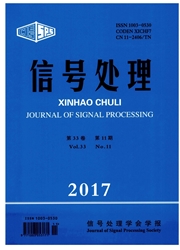

 中文摘要:
中文摘要:
在Nakagami-m衰落信道下,目的端和窃听者采用最大比合并策略,本文研究了在机会式自适应解码转发中继选择安全协作系统中的安全性能。由于实际信道中的反馈延迟,最优的合法中继选择基于合法信道反馈的过时信道状态信息。为了评价机会式中继选择在改善安全性能上的表现,分别推导了准确的正安全容量概率和准确的安全中断概率闭合表达式。此外,针对两种不同情况,推导了形式简单的渐近表达式,并明确给出安全分集阶数和安全阵列增益。理论分析和数值仿真表明,增加中继个数和目的节点的天线数能够改善安全中断概率的性能表现,且在信道状态信息过时的条件下,系统的安全分集阶数与中继数无关。
 英文摘要:
英文摘要:
This paper investigates the secrecy performance of opportunistic decode-and-forward( DF) relay selection in secure cooperative systems with maximal ratio combining( MRC) at the destination and the eavesdropper over Nakagami-m fading channels. The optimal legitimate relay is selected based on the outdated channel state information( CSI) of legitimate's channels due to practical delayed feedback. To evaluate the capability of the opportunistic relay selection in improving the secrecy performance,the expressions for exact probability of positive secrecy capacity and exact secrecy outage probability( SOP) are derived in closed form. Furthermore,simple asymptotic expressions are derived for two kinds of cases,explicitly showing the secrecy diversity order and the secrecy array gain. Analytical analysis and numerical simulations show that,the SOP performance can be improved by increasing whether the number of relays or the number of antennas at the destination. Furthermore,when the CSI is outdated,the secrecy diversity order of the system is independent of the number of relays.
 同期刊论文项目
同期刊论文项目
 同项目期刊论文
同项目期刊论文
 期刊信息
期刊信息
